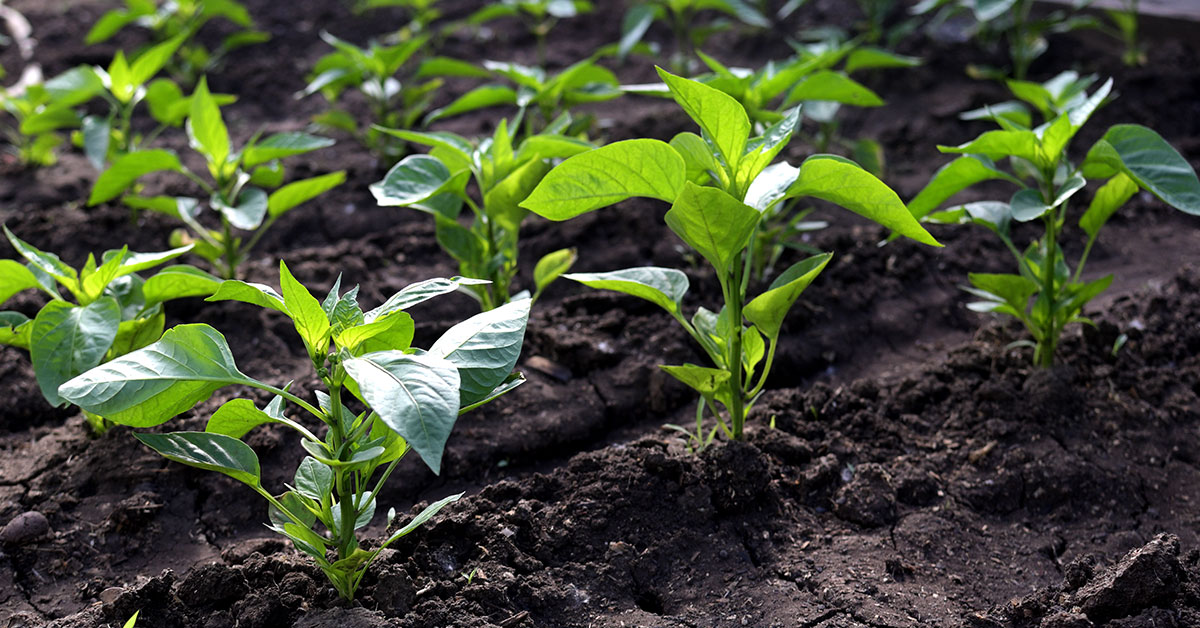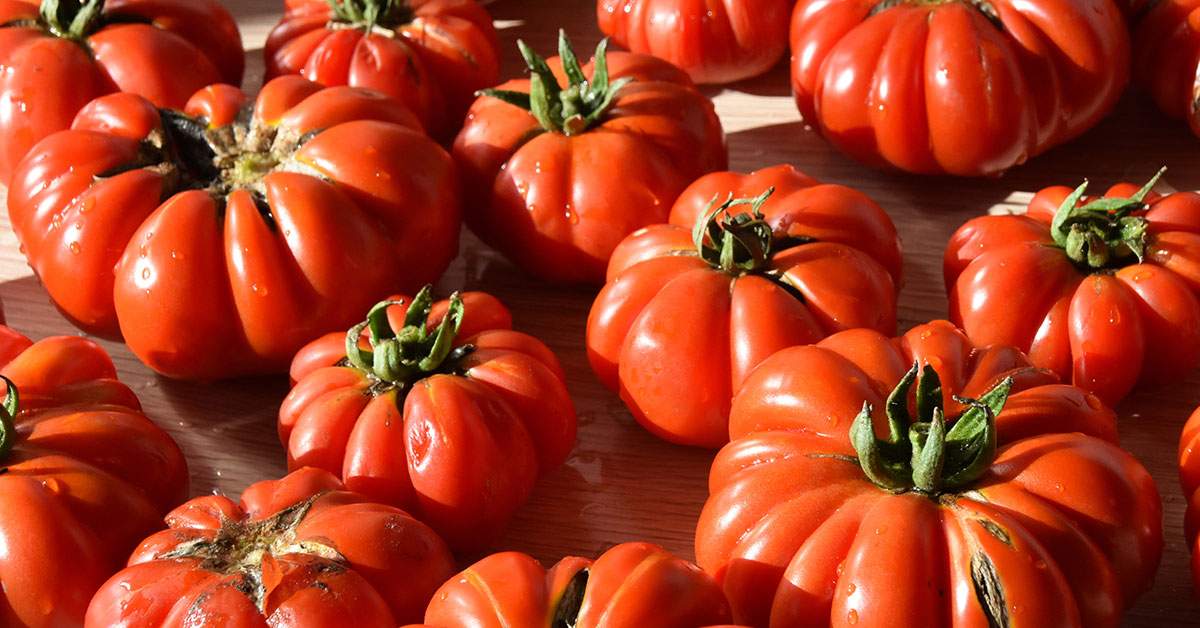The cascabel pepper is a unique and fascinating addition to any home garden or kitchen. Also known as the ‘rattle chili,’ it is a medium-sized chili pepper that produces a distinctive rattling sound when shaken due to the loose seeds inside.
The cascabel pepper plant is native to Mexico and is widely used in Mexican cuisine to add a rich, smoky flavor to a variety of dishes. In this article, we’ll discuss how to grow this interesting pepper.
What is a Cascabel Pepper?
The Cascabel Pepper is a type of chili pepper that is native to Mexico. It is a small, round pepper that is about the size of a cherry tomato. The Cascabel Pepper Plant is also known as the Rattle Chili, due to the rattling sound the dried seeds make when shaken in the pepper.
The Cascabel Pepper is a member of the Capsicum annuum family, which includes other popular peppers like jalapenos and bell peppers. The plant produces small, green peppers that turn red as they mature. The peppers have a mild to medium heat level, with a smoky, nutty flavor that is often described as earthy and complex.
The Cascabel Pepper Plant is a relatively easy plant to grow, making it a popular choice for home gardeners. It is a perennial plant that can be grown indoors or outdoors, depending on your climate. The plant prefers warm, sunny conditions and well-drained soil.
In addition to being used in Mexican cuisine, the Cascabel Pepper is also used in other Latin American and Southwestern dishes. It is often used in sauces, stews, soups, and marinades. The dried peppers can also be ground into a powder and used as a seasoning.
Overall, the Cascabel Pepper is a versatile and flavorful addition to any garden or kitchen. With its unique flavor and easy-growing nature, it’s no wonder why it has become a popular pepper choice for many people.
What do cascabel peppers taste like?
The cascabel pepper plant is a popular plant that is commonly used in Mexican cuisine. The pepper itself is small and round, with slightly wrinkled skin and a deep red color. But what does it taste like?
The cascabel pepper has a unique flavor that is often described as smoky, nutty, and slightly sweet. It’s not particularly spicy, with a mild to medium heat level that is comparable to a jalapeño pepper. The smoky flavor comes from the way the pepper is traditionally prepared, which involves toasting it on a hot skillet before using it in recipes.
In terms of its uses, the cascabel pepper is incredibly versatile. It’s often used in salsas, sauces, and stews, and can be used to add flavor to soups, chili, and marinades. It’s also commonly used to season meats, particularly pork and beef, and can be used to add a unique flavor to grilled vegetables.
Overall, the cascabel pepper plant is an excellent choice for anyone looking to add some depth and complexity to their cooking. Whether you’re a seasoned chef or just starting out in the kitchen, this versatile pepper is sure to become a staple ingredient in your recipes.
How to start cascabel pepper seeds
If you are a fan of spicy food, then the Cascabel pepper plant is a great addition to your garden. These chili peppers are not only delicious but also easy to grow at home. In this section, we will discuss how to start Cascabel pepper plant from seed.
- Choose the right time to plant
The best time to plant Cascabel pepper seeds is in early spring, around 8-10 weeks before the last expected frost. This will give your seedlings enough time to mature before transplanting them into your garden. - Gather the supplies
To start your Cascabel pepper seeds, you will need a few supplies such as seed starting trays, seed starting soil, plastic wrap, and a spray bottle. You can purchase these supplies at any local garden center or order them online. - Plant the seeds
Fill the seed starting trays with seed starting soil and moisten them with water. Next, sow the seeds about ¼ inch deep and cover them with a thin layer of soil. Gently press down on the soil to ensure good seed-to-soil contact. - Cover the trays
Cover the seed starting trays with plastic wrap to create a mini greenhouse effect. This will help retain moisture and warmth, which is essential for the germination process. Place the trays in a warm and bright location, such as near a south-facing window. - Water the seeds
Keep the soil moist by regularly spraying it with water from a spray bottle. Avoid overwatering, as this can cause the seeds to rot. You should see germination within 7-14 days. - Transplant the seedlings
Once the seedlings have grown their second set of leaves, they are ready to be transplanted into larger pots or directly into your garden. Make sure to harden them off by gradually exposing them to outdoor conditions before planting them in the ground.
In conclusion, starting Cascabel pepper plant from seed is a fun and rewarding experience. With a little bit of patience and care, you can grow these delicious chili peppers in your own backyard.
How to grow cascabel peppers
Cascabel peppers are a delicious and versatile addition to any garden. They are not only easy to grow but also produce a bountiful harvest. Here are some tips on how to grow cascabel pepper plants.
- Planting
Cascabel pepper plants can be grown from seeds or seedlings. If you choose to grow from seeds, start them indoors 6-8 weeks before the last frost of the season. They require warm soil to germinate, so a heat mat may be necessary. Once the seedlings have reached about 3 inches tall, they can be transplanted into the garden. Choose a spot with full sun and well-draining soil. - Watering
Cascabel pepper plants prefer consistent moisture but do not like to be overwatered. Water deeply once a week or whenever the top inch of soil feels dry. Avoid getting the leaves wet, as this can lead to disease. - Fertilizing
Cascabel pepper plants benefit from regular fertilization. Use a balanced fertilizer once a month during the growing season. You can also add compost to the soil before planting to provide nutrients. - Pruning
Prune cascabel pepper plants to promote bushier growth and a higher yield. Pinch off the top of the plant when it reaches about 12 inches tall. This will encourage the plant to produce more lateral branches and more peppers. - Harvesting
Cascabel peppers are ready to harvest when they are about 1 inch in diameter and have turned a deep red color. Use scissors or pruning shears to cut the peppers off the plant. Be sure to wear gloves when handling the peppers, as they can be hot.
When and How to Harvest Cascabel Peppers
Cascabel pepper plants are a popular choice for home gardeners who want to add a bit of spice to their meals. The peppers themselves are small, round, and red, and they pack a punch when it comes to heat. But when is the best time to harvest your cascabel peppers, and how should you go about doing it?
The first thing to keep in mind when harvesting cascabel peppers is timing. These peppers typically take around 80-100 days to mature, so you’ll need to be patient. Once the peppers have turned from green to red, it’s time to start thinking about harvesting. However, if you want a milder flavor, you can harvest them when they’re still green.
If you’re not sure whether your peppers are ready to be harvested, there are a few signs to look out for. Ripe cascabel peppers will be deep red in color, and they’ll feel slightly soft to the touch. You may also notice that the stem of the pepper has started to dry out.
Harvesting Cascabel Peppers
When it comes to harvesting cascabel peppers, there are a few different methods you can use. The easiest way is to simply pluck the peppers off the plant by hand. However, if you have a lot of peppers to harvest, you may want to consider using a pair of pruning shears.
When using pruning shears, it’s important to cut the stem of the pepper rather than pulling it off the plant. This will help to prevent damage to the plant and ensure that the remaining peppers continue to grow and ripen.
Storing Cascabel Peppers
Once you’ve harvested your cascabel peppers, it’s important to store them properly. If you plan on using them right away, you can simply keep them in a bowl on the counter. However, if you have more peppers than you can use in the near future, you may want to consider drying them.
To dry your cascabel peppers, simply string them together using a needle and thread, and hang them up in a warm, dry place. You can also use a dehydrator if you have one. Once the peppers are completely dry, you can store them in an airtight container for several months.
In conclusion, harvesting cascabel peppers is easy as long as you keep timing and method in mind. By following the tips outlined in this article, you’ll be able to enjoy the spicy flavor of cascabel peppers all year round.













